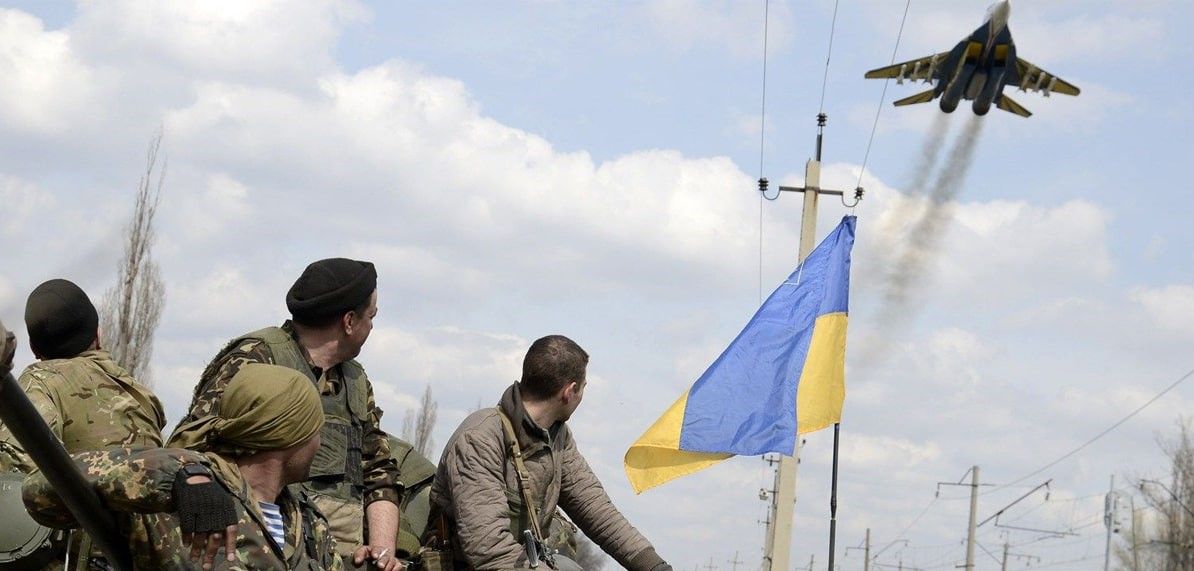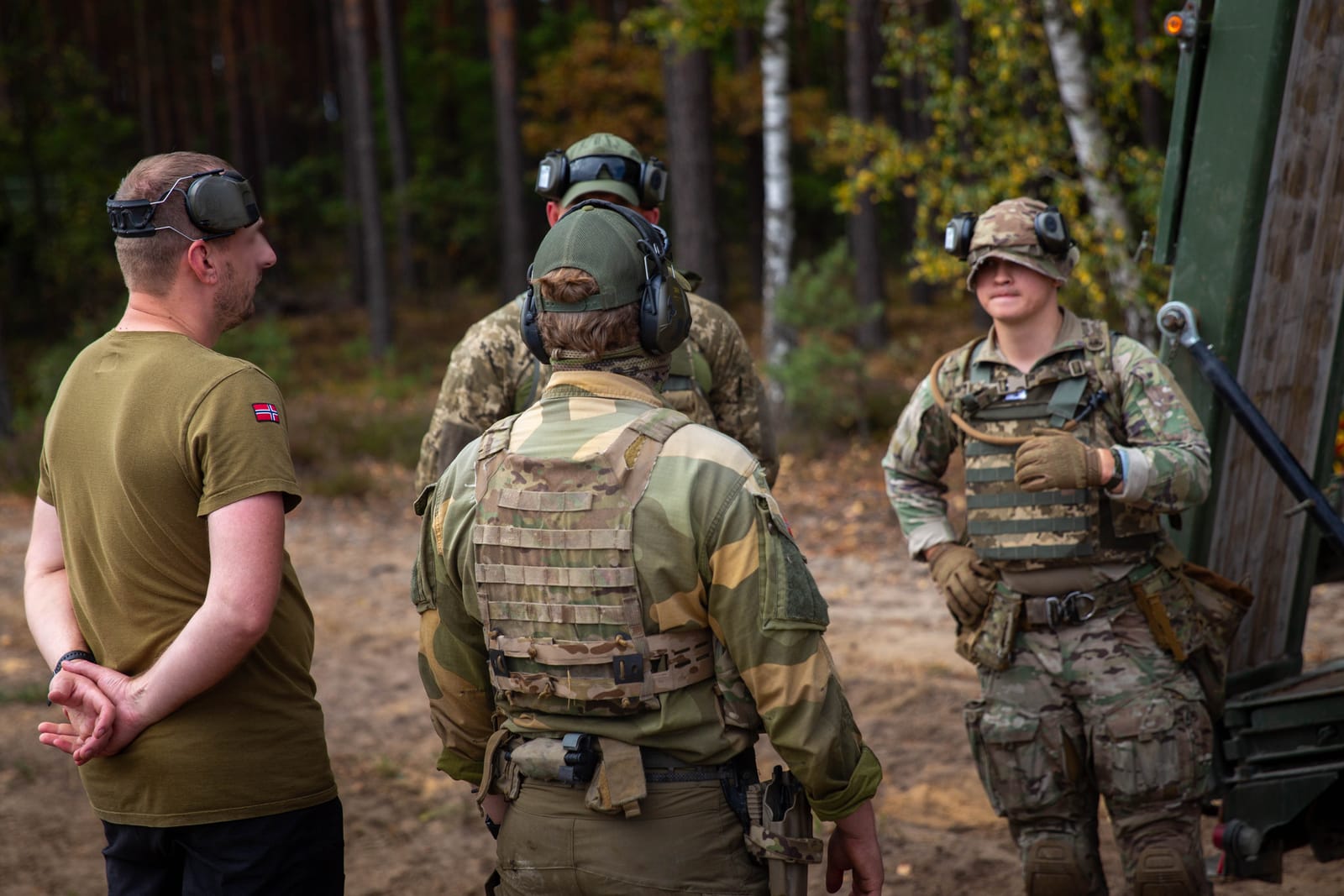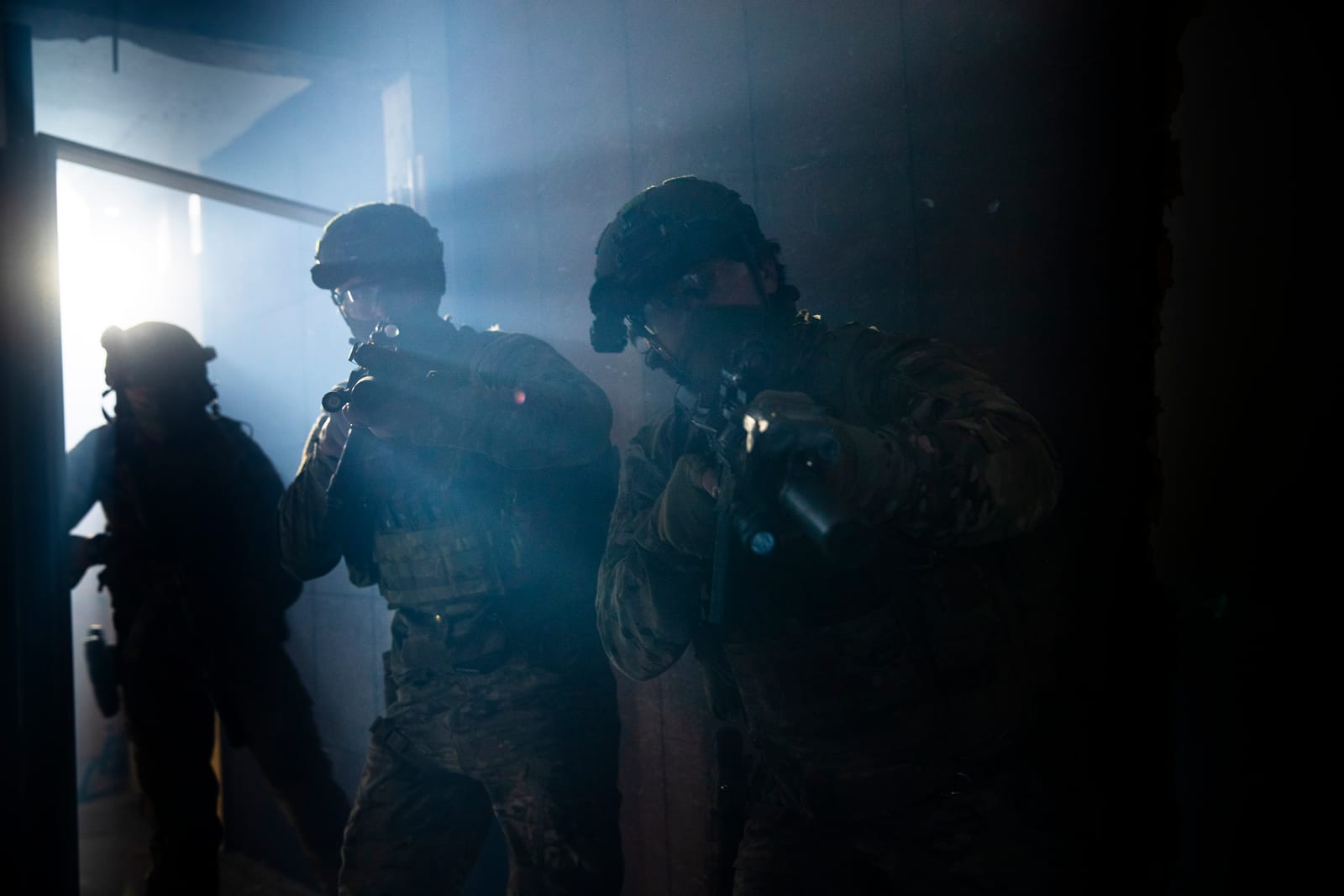The post-Cold War peace dividend has been proven false more than once in the last three decades. However, it has never been as costly as in the current Russian war in Ukraine. In this article, the post-Cold War development of the Ukrainian Air Force (UAF) is discussed in the context of political will, materiel, doctrine and operational experience in the timeframe of the thirty years of the service from 1992‒2022.
The central argument of the article is that, despite inconsistencies in the political will for financing and strengthening the service and misinterpretation of the strategic environment, the UAF preserved the core of its fighting power: skilled personnel with high morale and aerial capabilities that successfully oppose the numerically superior Russian Air Force. This strong core of the UAF strengthened by the Allied aid will allow it to rise like a phoenix from the ashes of the post-Cold War downfall.
The ashes of the former third biggest air force in the world
The Ukrainian Air Force was established on March 17, 1992. After the collapse of the Soviet Union, it inherited a very substantial fleet of more than 2,000 warplanes, being the third biggest fleet in the world after the United States and Russia. The UAF was capable of conducting the full spectrum of air power roles and tasks, including nuclear strategic attack. The disastrous belief in the peace dividend and international guarantees of security embodied in the Budapest Memorandum resulted in Ukraine giving away its nuclear stockpile and the elimination of the strategic bombers, with a consequent reduction of the rest of the warplane fleet. For example, in 1996‒99, Ukraine eliminated 29 strategic bombers (10 Tu-160 and 19 Tu-95MS) and 487 cruise missiles. In the next two years, to pay the Ukrainian debt for natural gas worth $285 million, Ukraine transferred to Russia 8 Tu-160, 3 Tu-95MS and 581 long-range X-55 strategic cruise missiles, capable of carrying nuclear warheads.[1]
At the time, the political leadership of the country believed that any possibility of a full-scale attack on Ukraine was very unlikely. Hence, the priority was given to the funding of all other sectors except for the military, with the focus of reducing the armed forces from 800,000 in 1991 to around 400,000 in 2001. Since the majority of the military budget was spent on personnel, the very idea of readiness and appropriate servicing of the existing capabilities was illusive at best.
The second post-Cold War decade was characterised by some centralised attempts to reform the Ukrainian Armed Forces according to the modern standards of NATO. Although ‘The State Programme for Reforming and the Development of the Armed Forces of Ukraine by 2005’ identified the need for modernisation of the Armed Forces following the model of smaller, more agile and technology-centric armed forces, it still continued the policy of downsizing and reduction of military budgets. For the Air Force, this meant merging with the air defence, continued reduction of military bases and no further modernisation of the air fleet of 500 aircraft.
New President Viktor Yushchenko’s formal establishment of turning to NATO in the 2005‒2007 national strategy and military doctrine documents finalised the merging of the Air Force with the Air Defence Force, the establishment of a Joint Operations command, and further stimulation of the establishment of a professional all-volunteer force of around 140,000 personnel. Orientation towards NATO’s practice, education, organisational structure and training was a step towards systematic reforms, but they were swept away by the presidency of the pro-Russian Government of President Viktor Yanukovych (2010‒2014). During his presidency, armed forces personnel were reduced to around 130,000 at the time of the Russian invasion in 2014.[2]
As the most technology-centric service, these years illustrated the drastic decline and reduction of facilities and even capabilities for training and provision of sufficient flying hours to pilots. Very low salaries compared to civilian aviation resulted in issues with the retention of skilled personnel. In terms of providing relevant operational experience and a sufficient skill set for combat readiness, while personnel from the other services were gaining some operational experience in UN peacekeeping operations, for the pilots it was mainly the experience of humanitarian tasks rather than combat training. Moreover, further dismantling of air force facilities and personnel cuts were taking place, with 19 units being dismantled in 2012‒2014 alone.
The malnutrition of the UAF for 20 years resulted in its limited ability to stand against the Russian invasion in Ukraine in 2014. Nevertheless, the UAF were actively involved in fights in Slovyansk, Kramatorsk, Donetsk airport and Ilovaisk. Stopping UAF participation in war was a precondition for the Minsk agreements. During the 2014 stage of the Russian war in Ukraine, the UAF lost 51 servicemen including 16 pilots. The annexation of Crimea with its military infrastructure also meant that the UAF lost 126 aircraft, of which only 92 were returned.[3]
The case of the UAF in the timeframe of 1992‒2014 is not a typical post-Cold War reform of the armed forces, with shrinking budgets aimed at the provision of essential protection of the national airspace. Instead, it is an illustration of a deliberate weakening of any capacity of the country to defend itself and, in the case of the UAF, to provide sufficient control of the national air space. Ignoring the needs of the Ukrainian Armed Forces for decades by many pro-Russian governments can be viewed as a long-term weakening of the country against Russia’s aggressive ambition. While the invasion of 2014 and the pretended ceasefire should have stimulated reform of the Armed Forces and the need for strengthening national defence, corruption flourished, with continued further selling of aerial capabilities abroad instead of supplying and strengthening the national aerial fleet. Ukrainian military journalist Illia Ponomarenko wrote in 2019:
‘Between 2007 and 2017 alone, according to figures provided by the State Service of Export Control, Ukraine sold as many as 65 combat jets (Su‑27s, Su‑25s, and Su‑22s, MiG‑29s and MiG‑21s), 41 L‑39 Albatros trainer aircraft, six An‑72, An‑74, and An‑12 military transport aircraft, three Il‑78 tankers, 50 Tu‑143 reconnaissance drones, 44 Mi‑24 and Mi‑28 helicopters, and 802 missiles of various types (mainly R‑24, R‑27 and R‑73 air-to-air missiles, and the Kh‑59 air-launched cruise missile). The years of sales brought the state millions of dollars, but since 1991 the UAF has not received a single new aircraft.’[4]
The UAF doctrine: Survival mode – to do the most with what we have
2014 was a culminating point in the decline of the UAF, but it was also a starting point for its resurrection. In the 8 years between the first and second invasion, we can observe a few developments in the Ukrainian air power.
First, the knowledge of the past is seldom forgotten ‒ once an airman, always an airman. The 2014 war brought back many veterans into the service who began teaching and training the younger generation of pilots in drills and expertise in air warfare from the Soviet times. The reality of the aerial warfighting of the Russians in 2022 showed that they had not evolved much from the Soviet time, which made their manoeuvres and tactics very predictable, especially for the pilots drilled by Soviet veterans. Hence, the principle of knowing one’s enemy and knowing oneself has been executed to its best in the aerial domain, just as across all other domains of warfare in Ukraine, since February 2022 until today.
Second, despite limited resources, training facilities and systematic exercises, the Air Force was doing everything to provide much-needed flying hours and relevant education, even if it meant closing highways for take-off and landing in instances where specialised airfields were not available. At the same time, besides military exercises with NATO and the UAF, personnel were given military education courses by allied nations. Norwegian Air Force personnel were no exception, with teaching courses being given to Ukrainian personnel in Ukraine and Ukrainian students visiting the Air Force Academy in Trondheim.
Third, despite previous numerous sales of aircraft abroad, in 2018 the service received 50 both modernised and repaired aircraft, with further minor modernisation of navigation and radars for the existing fighter jets in the fleet.[5] Modifications were made to Su-27, MiG-29 and Su-25 jets to extend their service time to 2030. Despite the war-stimulated increase in military funding, the size of the extended conventional air fleet was far from sufficient compared to the threat of the Russian aviation characterised by the unchanged Soviet mass approach to its structuring and employment of air power. Hence, the unlikelihood of further increase or modernisation of the air fleet with conventional aircraft meant that alternative solutions had to be found. In this regard, the focus was placed on the strengthening of ground-based air defences (with the Soviet-era S300, the 9K330 Tor, the 2K12 Kub and the S-125 Neva) and widening the aerial fighting power, with Bayraktar TB-2 drones being purchased from Turkey in 2019. Finally, attention was paid to fixing the issues revealed in 2014, meaning the increase and improvement of the command, control, communications and intelligence (C3I) infrastructure and utility of the air defence network.[6]
Baptised by fire…
In the first few hours of the attack on February 24, 2022, the Russians tried to destroy the UAF on the ground by targeting airfields, airbases and fuel storage facilities. However, at the time of the attack many aircraft were in the air and elsewhere, preventing the intended annihilation of the UAF in the first few hours of the attack. In further weeks of the war, the obvious differences in size between the Russian and Ukrainian air fleets resulted in very different regular sorties by the two forces. While the Russian Air Force would normally make 200 sorties per day, the Ukrainians would only conduct five to ten, which was conditioned by the necessity of preserving scarce conventional aircraft and placing greater emphasis on ground-based air defence, which in the last few months of the war significantly reduced the Russian freedom of manoeuvre in the aerial domain. Ukrainian fighter jets are primarily used for the strategic objectives of attack and control of the air, while close air support and tactical tasks are provided by Bayraktar drones. Ukrainian fighter pilots had to adjust to the reality of war, flying aircraft from air strips, already-bombed airports and even highways. There was even a viral video showing a Ukrainian pilot getting the aircraft into the air during the heavy bombardment of the airfield.
The world’s biggest strategic airlift cargo aircraft An-225 Mriya was destroyed while stationed in its hangar in the Battle of Hostomel\Antonov Airport on February 27, 2022. Nevertheless, the smaller strategic airlift aircraft of the Antonov line, the An-124 Ruslan, continues to perform the delivery of supplies and military aid from allies. Recently, they were used for delivering Bushmaster protected delivery vehicles and the M777 howitzer from Australia.
The survivability of the UAF is conditioned by various factors. First, just as in any domain, Ukraine has the advantage of the terrain. In the aerial domain this means that, despite being outnumbered by Russian fighters, Ukrainian pilots lure the Russians to within the reach of our air defences, resulting in significant losses among the Russian Air Force, hence taking advantage of the weaknesses of the traditional mass approach and concentration of force. In the land domain, long Russian convoys are nicely destroyed by artillery with the tactical ISR provided by drones.
Second, for any Ukrainian fighter, irrespective of the domain, this war is a war for the survival of the Ukrainian nation, which means there is only one way – going forward and destroying the enemy at any cost. In other words, morale is exceptionally high among the Ukrainian combatants. On the other hand, the morale of Russian pilots has substantially reduced, considering the ‘malfunctioning’ of their parachutes and reluctance of many to fly into the hell of Ukrainian airspace. This reluctance has grown further with the strengthening of the Ukrainian air defences and ground forces with allied weapons. Although numbers vary, according to the General Staff of the Armed Forces of Ukraine, from February 24 to May 8, 2022, Russian losses in Ukraine are estimated as: 25,500 personnel, 1130 tanks, 2741 armoured personnel vehicles, 509 artillery systems, 179 MLRS, 86 anti-aircraft warfare systems, 199 aircraft, 156 helicopters, 360 UAVs, 1961 vehicles and fuel tanks, 12 boats/ships, 39 pieces of special equipment, and 92 cruise missiles.[7] The day before, on May 7, 2022, two Ukrainian Su-27 made a raid on Russian facilities on Snake Island in the Black Sea, destroying Russian plans to establish an outpost for further targeting of the Ukrainian coastline from the island.
The obvious disadvantage and vulnerability of the UAF remains its gradual reduction in numbers, one aircraft and skilled pilot at a time. There is an urgent need for new aircraft and spare parts for repair of the existing ones, which Ukraine has begun receiving from its allies.
Resurrection from the ashes
Through the thirty years of its existence, the UAF has illustrated outstanding stoicism, professionalism and adaptability to the most complex and unpredictable circumstances. The remaining personnel of the air force will get through the war and will become the core of the refurbished service that will continue exercises with NATO allies in the blue skies of Ukraine and Black Sea region. Ukraine has industrial, manpower and intellectual capabilities to build modern fighter aircraft, An-lines and multi-purpose UAVs for the purposes of our own Air Force and our allies. The phoenix of the UAF will rise from the ashes of this war.
Glory to Ukraine! Glory to heroes!
[1] Oleksiy Trygub, ‘Air Force of the Ukrainian state: the first ten years of formation’ Army Inform, November 24, 2021. https://armyinform.com.ua/2021/11/24/povitryani-syly-ukrayinskoyi-derzhavy-pershi-desyat-rokiv-stanovlennya/
[2] Leonid Polyakov, ‘Ukraine,’ in The Handbook of European Defence Policies and Armed Forces, ed. Hugo Meijer and Marco Wyss (Oxford:OUP, 2018), pp. 179-194.
[3] Illia Ponomarenko, ‘Ukraine’s Air Force rebuilds amid war’ Kyiv Post, March 15, 2019 https://www.kyivpost.com/ukraine-politics/ukraines-air-force-rebuilds-amid-war.html
[4] Ibid.
[5] Ibid.
[6] Arda Mevlutoglu, ‘Ukraine’s Military Transformation between 2014 and 2022’ Politics Today, April 7, 2022 https://politicstoday.org/ukraine-military-transformation/
[7] Official statistics from the General Staff of the Armed Forces of Ukraine https://www.facebook.com/photo.php?fbid=312112631101822&set=pb.100069092624537.-2207520000..&type=3
Artikkelen ble først publisert i Luftled 22-02







